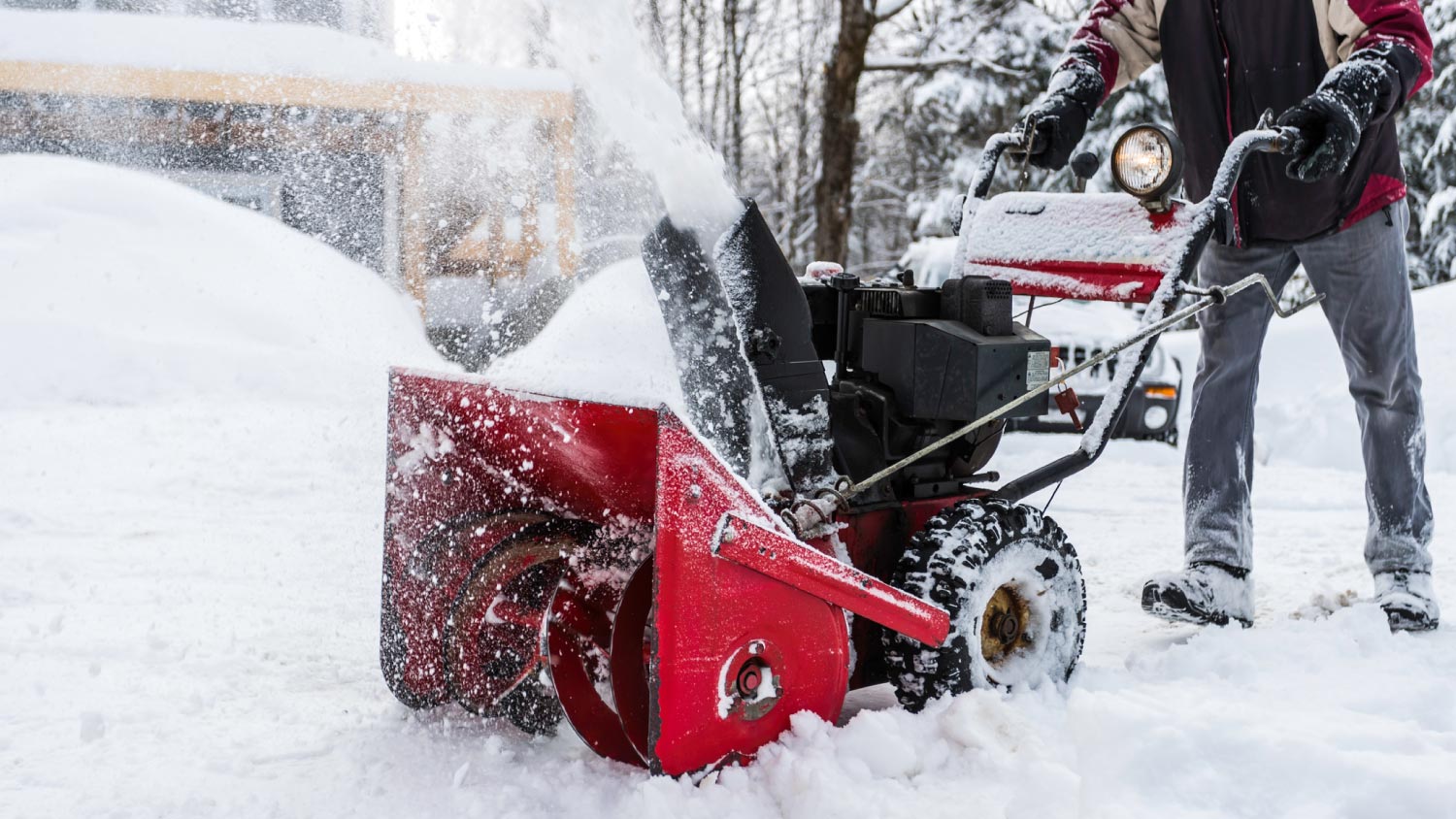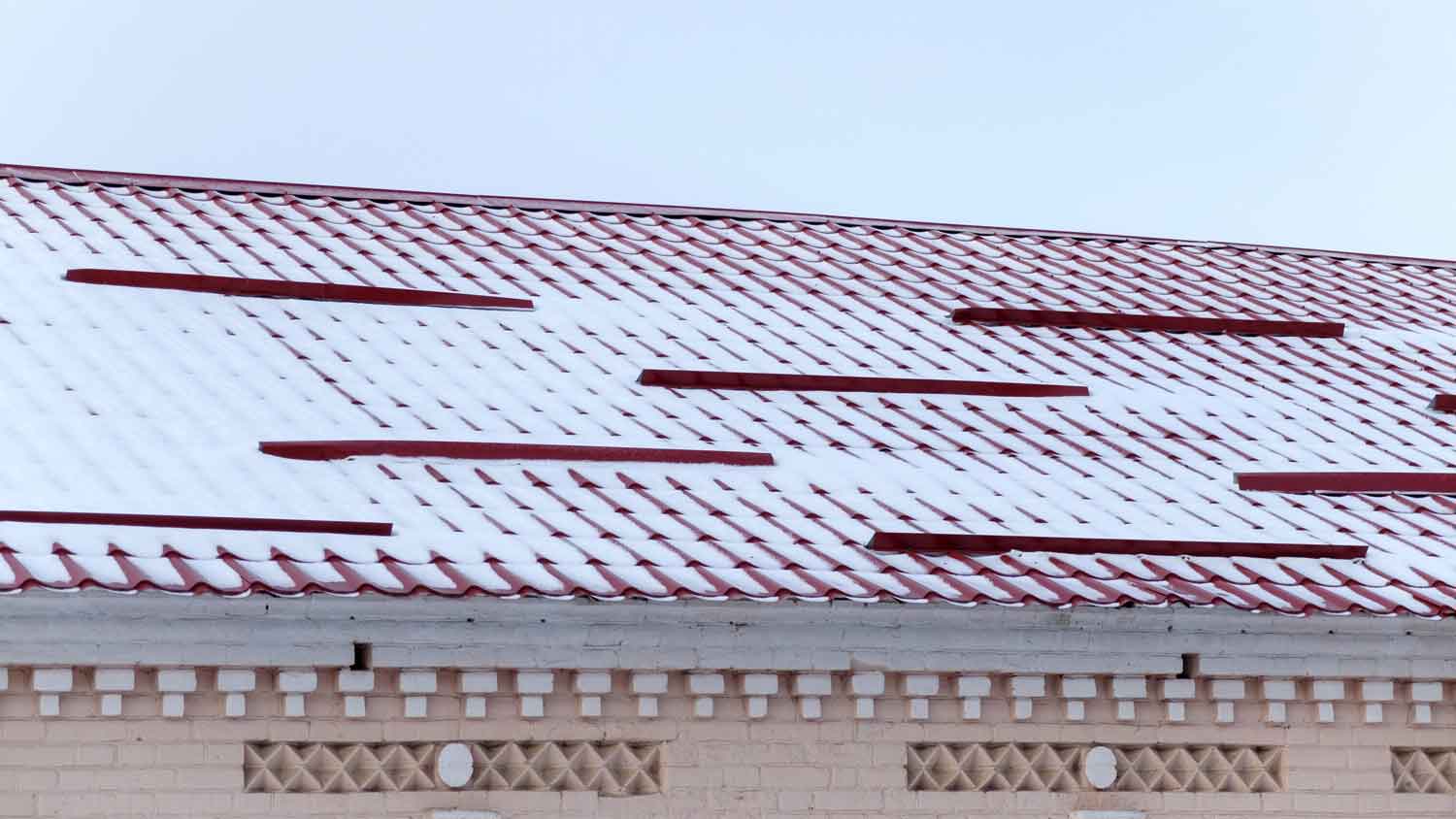
Get the latest snow removal cost estimates, including average prices, key cost factors, and tips to help homeowners budget for safe, efficient snow removal.
These tips will show you how to clear the snow like a pro


Everyone loves to experience a winter wonderland, but, while freshly fallen snow is wonderful to look at, it can be challenging to remove. Luckily, we have plenty of snow removal tips to make the process less painstaking and time consuming. Use these ten snow removal methods to tackle this daunting task, so you can get back to experiencing the joy of the season. Don’t forget to consider hiring a local snow removal service to clear your snow all season long.
Rock salt and ice melt are deicing agents, and it's best to apply the product before inclement weather begins. (You’ve likely seen trucks laying salt on the roads before a blizzard hits for that reason.) It prevents snow and ice from bonding to the pavement, which reduces the risk of slippery ice forming and makes shoveling easier. Whether you choose rock salt or ice melt depends on the temperature, how fast you need it to work, and any safety concerns.
Laying down tarps before snowfall is one of the simplest snow removal tips you can try. Choose a durable tarp that is large enough to cover the area you want to protect, and lay it flat on the surface. Anchor it with heavy objects to prevent it from slipping or blowing away during high winds and storms. This method will help protect the area from snow accumulation.
You may think that all snow shovels are alike, but they are very different. They are made from plastic or metal and serve different purposes. There are pushers that push lighter, fluffier snow, scoop shovels that work well on dense snow, and ergonomic shovels designed to reduce stress on your back. Using the proper shovel will help you get the job done quicker and without injury.
If you deal with frequent bouts of light, fluffy snow, then you can use a backpack blower to blast snow from patios, walkways, and your driveway. A backpack snow blower can prevent you from having to shovel as often and makes the process of removing snow faster. This method isn't ideal for significant snowfall that is heavy and wet, so you should only try using a backpack blower if conditions call for it.
Using a snowblower can drastically reduce the time it takes to remove snow. However, you need to have the right size and type of snowblower to meet snow conditions. A one-stage snowblower is best for light to moderate snow on smooth surfaces, whereas a two-stage or three-stage snowblower plows through deep, heavy, and wet snow. If you live in an area that frequently gets deep snow, consider investing in a high-quality snowblower.
It's tempting to wait until the snow finishes falling before heading outside to dig out the car and clear the walkways. However, clearing the snow before it gets too deep can make shoveling and snow-blowing easier.
Snow can be heavy, and it’s more difficult to remove after it accumulates into large piles. Instead of opening your door to a three-foot snowdrift, get to work while snow is still falling to make it a less demanding task. Be sure that the weather conditions permit outside activity before removing snow while precipitation is still falling.
Good-condition roofs can handle about 20 pounds per cubic foot of fresh snow. However, more weight can cause a roof to collapse. A roof rake is a handy tool designed to clear snow without having to risk stepping on a ladder. This tool can reach up to 30 feet, so you can stand safely on the ground and remove snow from the roof, which will prevent ice dams from forming.
Wet or heavy snow piles up on evergreen plants and larger tree branches, posing a danger to both, which can break due to the weight. Take a couple of minutes after heavy snowfall to brush snow off of sagging branches and leaves. This method will help your yard recover quickly and protect your trees and plants from frost damage. If you have cold-sensitive plants, make sure they’re covered before the snow hits.
Snow removal poses a high risk for injury. Before you attempt shoveling, practice proper form—warm up, go slow, and only lift what you can handle. Try pushing snow when possible and take breaks when needed. To prevent frostbite and slipping, wear protective footwear and gear. If you use snow removal equipment, make sure to read the manufacturer's instructions so you can prevent danger to yourself and your equipment.
One of the top snow removal tips that will make your life much easier is to hire a snow removal service near you to tackle the task.
How much it costs depends on your location, the type of service you need, and the size of your property. Snow removal costs between $50 and $200, with an average of $120 per session. That’s well worth the price if you have physical limitations or your to-do list is a mile long.
From average costs to expert advice, get all the answers you need to get your job done.

Get the latest snow removal cost estimates, including average prices, key cost factors, and tips to help homeowners budget for safe, efficient snow removal.

Discover the cost to install snow guards. Learn about average prices, key cost factors, and tips to save on your snow guard installation project.

Using traditional rock salt to melt ice can negatively impact the environment, your pets, and more. Learn how to melt ice with salt.

Winter storms and blizzards are no joke, even if you are relatively snug at home. Follow these tips to survive and thrive during brutal weather events.

Nothing ruins a good deck like ample and consistent build-up of snow and ice. Whether your outdoor deck features wood, composite material, or even PVC, here are steps to take to keep it safe and damage-free during those nasty winter months.

Deciding between a gas snow blower vs electric? Weigh all of the pros and cons with this informative guide before you buy.